#solarpunk gardening
Text
So, this is cool:
We need to convince more municipalities to plant more trees. I would suggest looking into trees that are more heat and drought tolerant (oaks, not western red cedar, for an example) & also those that grow more quickly. Planting on the west and south (or north, if you're in the Southern hemisphere) of a building matters the most for heat reduction.
If you want to get into it, I'd suggest finding your Köppen climate classification, and then finding either native trees that can thrive in a hotter-but-otherwise-similar climate than yours, or trees from such a climate. For example, I'm in a warm-summer Mediterranean climate so I'm looking at plants from Hot-summer Mediterranean climates that are hardy enough to still survive our winters (oaks, I'm looking at oaks. Fortunately, one species extends from here to down there, so that's easy).
I wouldn't usually advocate for non-native plants, but I'm seeing the climate change quickly enough that I think maybe humans should help with the pole-wards migration of plants.
2K notes
·
View notes
Text
How to collect & use kitchen grey water to conserve water and water your garden all at once!
1. Soap* up/scrub your dishes:

2. Put a big pot in your sink:

3. Start rinsing your dishes:

4. Mmmm, dirty dish water**:

5. Let cool a bit if you used very hot water, then water plants of your choice***:

Do look up the grey water regulations in your area, at least so you know them. Read up a bit more on greywater systems. This may or may not be legal in your area, but understanding why it is or isn't can help you decide how to safely incorporate water reuse into your life.
One of the common big ones is that your not allowed to just let the water sit there, or pool on the ground. A common tactic is to divert the water below the surface of the soil, which can be accomplished easily. Some people don't want you to use kitchen grey water because of concerns around bacterial contamination from raw meat, etc, so consider how you're going to deal with that.
* don't use chlorine or borax (I don't know anyone who does for dishes, but you can't be sure on the internet). If you're quite concerned about your soap, get one that's labeled environmentally friendly or whatever.
** I'm a vegan so I don't have to worry about this, but if you're not, make sure you don't use waste water from dishes that had contact with raw meat or eggs. Because of potential bacterial contamination.
*** soap is basic, so don't water acid-loving plants with this. Never allow the water to pool for any length of time. Here you can see that I'm watering a cucurbit, which are thirsty plants that appreciate extra nutrients.
#solarpunk#practical solarpunk#solarpunk gardening#permaculture#greywater#graywater#the punk is because this isn't technically legal#but they also didn't make a law here specifically targeting this method#;)#water conservation#sustainable vegan#vegan gardening#vegan solarpunk
740 notes
·
View notes
Text

First tomatoes!
I had no idea they would show up so fast
12 notes
·
View notes
Text
Natalie Topa's channel is a favorite of mine, just for how inspirational and actionable the ideas and visuals presented on it is. She is primarily working in African locations at a local, site-based level to illustrate and demonstrate the conservation of water, nutrients, and the promote the local participation in these activities.
I don't live in a decertifying region, personally, but I think the principles of water management, landscape contour, and localized resilience are applicable worldwide; plus, she illustrates a lot of situations that demonstrate exactly why certain landscapes are becoming degraded and how local issues spill out into the wider landscape.
Her videos about apartment permaculture and waste-stream management are also super inspirational and show how even without a plot of land we can be working towards more sustainable living.
youtube
youtube
#punk garden#solarpunk#gardening#permaculture#video recommendations#solarpunk gardening#resilience#Youtube
7 notes
·
View notes
Text
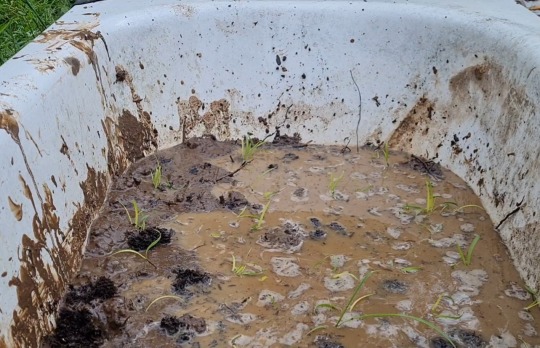

[Image description in alt text]
This is my bathtub paddy field. I'm trying to grow rice at home! Fingers crossed!
#rice#growing grains#grains#gardening#food autonomy#food security#solarpunk gardening#growing food#kitchen garden#experiments
19 notes
·
View notes
Text

I see homemade spaghetti sauce in my future! (Roma - otherwise known as plum).
3 notes
·
View notes
Text
Golf Courses ARE Being Converted
The Solarpunk "fantasy" that so many of us tout as a dream vision, converting golf courses into ecological wonderlands, is being implemented across the USA according to this NYT article!
The article covers courses in Michigan, Pennsylvania, California, Colorado, and New York that are being bought and turned into habitat and hiking trails.

The article goes more into detail about how sand traps are being turned into sand boxes for kids, endangered local species are being planted, rocks for owl habitat are being installed, and that as these courses become wilder, they are creating more areas for biodiversity to thrive.
Most of the courses in transition are being bought by Local Land Trusts. Apparently the supply of golf courses in the USA is way over the demand, and many have been shut down since the early 2000s. While many are bought up and paved over, land Trusts have been able to buy several and turn them into what the communities want: public areas for people and wildlife. It does make a point to say that not every hold course location lends itself well to habitat for animals (but that doesn't mean it wouldn't make great housing!)
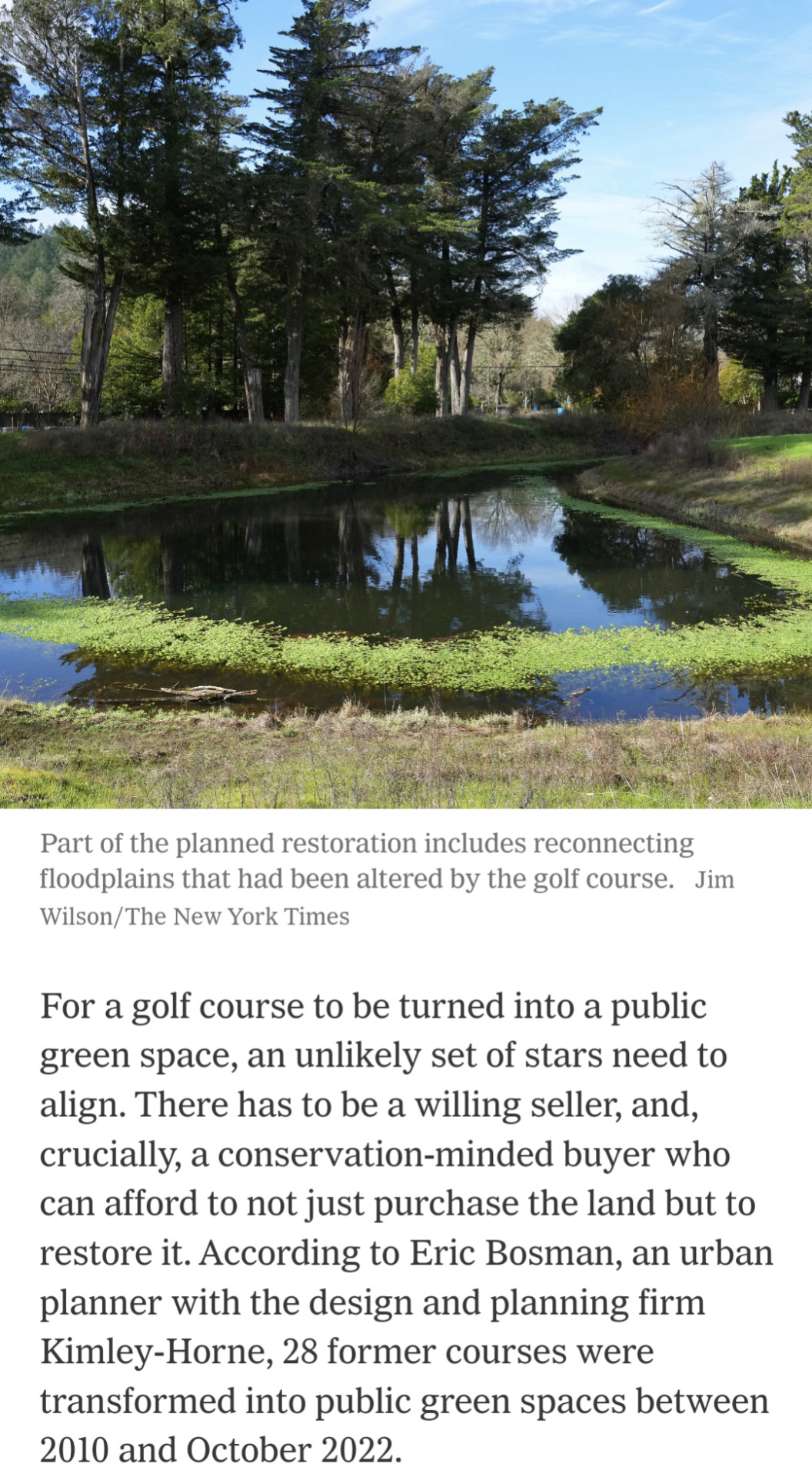
So lets be excited by the fact that people we don't even know about are working on the solutions we love to see! Turning a private space that needs thousands of gallons of water and fertilizer into an ecologically oriented public space is the future I want to see! I can say when I used to work in water conservation, we were getting a lot of clients that were golf courses that were interested in cutting their resource input, and they ended up planting a lot of natives! So even the golf courses that still operate could be making an effort.
So what I'd encourage you to do is see if there's any land or community trusts in your area, and see if you can get involved! Maybe even look into how to start one in your community! Through land trusts it's not always golf course conversions, but community gardens, solar fields, disaster adaptation, or low cost housing! (Here's a link to the first locator I found, but that doesn't mean if something isn't on here it doesn't exist in your area, do some digging!)
#solarpunk#sustainability#climate change#gardening#activism#hope#climate justice#news#new york times#golf courses#habitat#conservation
14K notes
·
View notes
Text
First ripe blackcap raspberries in my yard this year. This patch showed up on its own, and I get tasty berries for the low, low cost of not doing anything (I do occasionally pull bindweed off them and remove dead canes, but that's it). Native plants for the win!

1 note
·
View note
Text
Homemaking, gardening, and self-sufficiency resources that won't radicalize you into a hate group

It seems like self-sufficiency and homemaking skills are blowing up right now. With the COVID-19 pandemic and the current economic crisis, a lot of folks, especially young people, are looking to develop skills that will help them be a little bit less dependent on our consumerist economy. And I think that's generally a good thing. I think more of us should know how to cook a meal from scratch, grow our own vegetables, and mend our own clothes. Those are good skills to have.
Unfortunately, these "self-sufficiency" skills are often used as a recruiting tactic by white supremacists, TERFs, and other hate groups. They become a way to reconnect to or relive the "good old days," a romanticized (false) past before modern society and civil rights. And for a lot of people, these skills are inseparably connected to their politics and may even be used as a tool to indoctrinate new people.
In the spirit of building safe communities, here's a complete list of the safe resources I've found for learning homemaking, gardening, and related skills. Safe for me means queer- and trans-friendly, inclusive of different races and cultures, does not contain Christian preaching, and does not contain white supremacist or TERF dog whistles.
Homemaking/Housekeeping/Caring for your home:
Making It by Kelly Coyne and Erik Knutzen [book] (The big crunchy household DIY book; includes every level of self-sufficiency from making your own toothpaste and laundry soap to setting up raised beds to butchering a chicken. Authors are explicitly left-leaning.)
Safe and Sound: A Renter-Friendly Guide to Home Repair by Mercury Stardust [book] (A guide to simple home repair tasks, written with rentals in mind; very compassionate and accessible language.)
How To Keep House While Drowning by KC Davis [book] (The book about cleaning and housework for people who get overwhelmed by cleaning and housework, based on the premise that messiness is not a moral failing; disability and neurodivergence friendly; genuinely changed how I approach cleaning tasks.)
Gardening
Rebel Gardening by Alessandro Vitale [book] (Really great introduction to urban gardening; explicitly discusses renter-friendly garden designs in small spaces; lots of DIY solutions using recycled materials; note that the author lives in England, so check if plants are invasive in your area before putting them in the ground.)
Country/Rural Living:
Woodsqueer by Gretchen Legler [book] (Memoir of a lesbian who lives and works on a rural farm in Maine with her wife; does a good job of showing what it's like to be queer in a rural space; CW for mentions of domestic violence, infidelity/cheating, and internalized homophobia)
"Debunking the Off-Grid Fantasy" by Maggie Mae Fish [video essay] (Deconstructs the off-grid lifestyle and the myth of self-reliance)
Sewing/Mending:
Annika Victoria [YouTube channel] (No longer active, but their videos are still a great resource for anyone learning to sew; check out the beginner project playlist to start. This is where I learned a lot of what I know about sewing.)
Make, Sew, and Mend by Bernadette Banner [book] (A very thorough written introduction to hand-sewing, written by a clothing historian; lots of fun garment history facts; explicitly inclusive of BIPOC, queer, and trans sewists.)
Sustainability/Land Stewardship
Braiding Sweetgrass by Robin Wall Kimmerer [book] (Most of you have probably already read this one or had it recommended to you, but it really is that good; excellent example of how traditional animist beliefs -- in this case, indigenous American beliefs -- can exist in healthy symbiosis with science; more philosophy than how-to, but a great foundational resource.)
Wild Witchcraft by Rebecca Beyer [book] (This one is for my fellow witches; one of my favorite witchcraft books, and an excellent example of a place-based practice deeply rooted in the land.)
Avoiding the "Crunchy to Alt Right Pipeline"
Note: the "crunchy to alt-right pipeline" is a term used to describe how white supremacists and other far right groups use "crunchy" spaces (i.e., spaces dedicated to farming, homemaking, alternative medicine, simple living/slow living, etc.) to recruit and indoctrinate people into their movements. Knowing how this recruitment works can help you recognize it when you do encounter it and avoid being influenced by it.
"The Crunchy-to-Alt-Right Pipeline" by Kathleen Belew [magazine article] (Good, short introduction to this issue and its history.)
Sisters in Hate by Seyward Darby (I feel like I need to give a content warning: this book contains explicit descriptions of racism, white supremacy, and Neo Nazis, and it's a very difficult read, but it really is a great, in-depth breakdown of the role women play in the alt-right; also explicitly addresses the crunchy to alt-right pipeline.)
These are just the resources I've personally found helpful, so if anyone else has any they want to add, please, please do!
#homemaking#homemaking resources#gardening#urban gardening#self sufficiency#self sufficient living#sustainability#sustainable living#homesteading#nontrad homemaker#nontrad housewife#urban homesteading#solarpunk#cottagecore#kitchen witch#kitchen witchcraft#crunchy to alt right pipeline#book rec#book recommendations#resource#long post#mine#racism tw#racism mention#transphobia tw#transphobia mention
1K notes
·
View notes
Video
streets with rain gardens and streets without
#tiktok#rain gardens#rain garden#garden#gardening#water pollution#green infrastructure#air pollution#pollenators#solarpunk#solar punk
14K notes
·
View notes
Text
Today, we're doing part of the selection process for saving seed from kale. Ideally, when they bloom next year, I'll have winnowed my population down to about 25 to 50 plants.
Already, I've selected for:
Ability to sprout after more than a year of poor storage conditions
Vigor in overcrowded situations (because I thought it wouldn't have a good germination rate... turns out they're very resilient seeds!)
Strong root systems capable of getting water even without irrigating, even in hotter and dryer conditions than normal (they're in a hoop house)
Now, I'm selecting for leaf shape and resistance to invertebrate grazing pressure:

I'm working from a grex, which in the context that I know it from, is a population of plants that have a lot of genetic diversity, with a lot of expressed variety, which can either be maintainedor be used to select a new variety. You can make a grex by picking a few varieties of kale, for example, letting them cross, and then choosing to maintain a certain level of diversity through the following generations.
We've decided that we like the broader, flatter, less frilly leaves, so I'm thinning out all the frilly-est plants. Here's post thinning:

And here's the day's kale for breakfast and lunch:
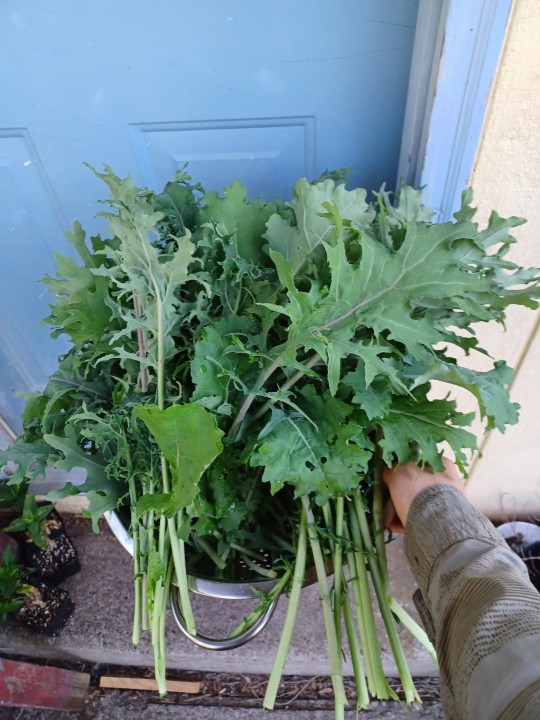
I'll keep making selections over the next year or so, removing from the gene pool any that are too bug eaten, or don't make it through winter, or bolt way early next spring.
Now, I'm not an expert here, and I'm doing this very casually, but I've been very happy with the results so far. If you want to learn more, I really liked Carol Deppe's book about breeding vegetables.
381 notes
·
View notes
Text
Remember, a solarpunk future without support for the disabled population is just green-washed ableism.
A solarpunk future that doesn't include (or purposely excludes) Indigenous/PoC populations is just green-washed white supremacy/colonialism.
A solarpunk future that doesn't feed the hungry or house the poor is just green-washed capitalism.
Solarpunk is more than just an aesthetic. It's a hope for a better future for everyone.
#nature#solarpunk#gardening#cottagecore#naturecore#anticapitalism#anarchism#environmentalism#sustainability#plants
4K notes
·
View notes
Text




12K notes
·
View notes
Text


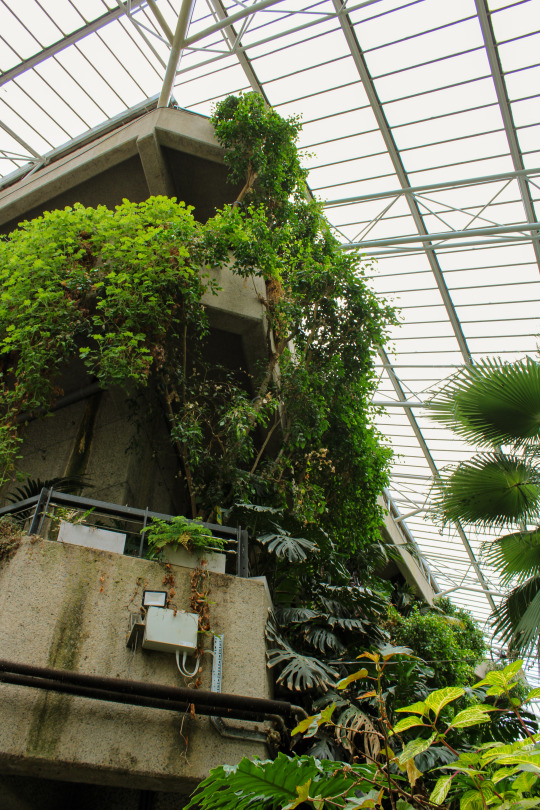
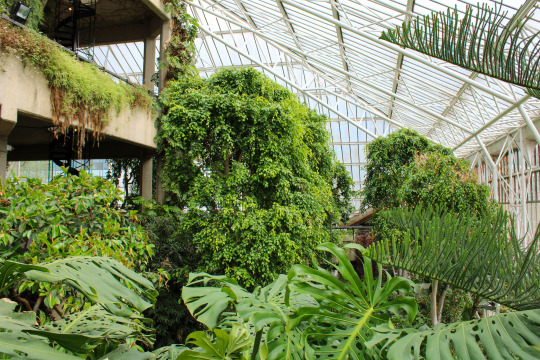
Barbican Conservatory Pt. 1
Taken 31st May 2023, Barbican Conservatory, London
#plantcore#botany#botanical#plantlife#plants#naturephotography#botanic academia#green academia#solarpunk#brutalism#indoor jungle#greenery#verdant#city garden#urban jungle#naturecore#naturelover#tree photography
3K notes
·
View notes
Text
Things to Do that Aren't Related to Growing Plants
This is my second post in a series I’ll be making on how to increase biodiversity on a budget! I’m not an expert--just an enthusiast--but I hope something you find here helps!
Some of us just don’t have much luck when it comes to growing plants. Some of us simply want to aim for other ways to help that don’t involve putting on gardening gloves. Maybe you've already got a garden, but you want to do more. No problem! There’s a couple of options you can look into that’ll help attract wildlife in your area without even having to bring out any shovels!
Provide a Water Source
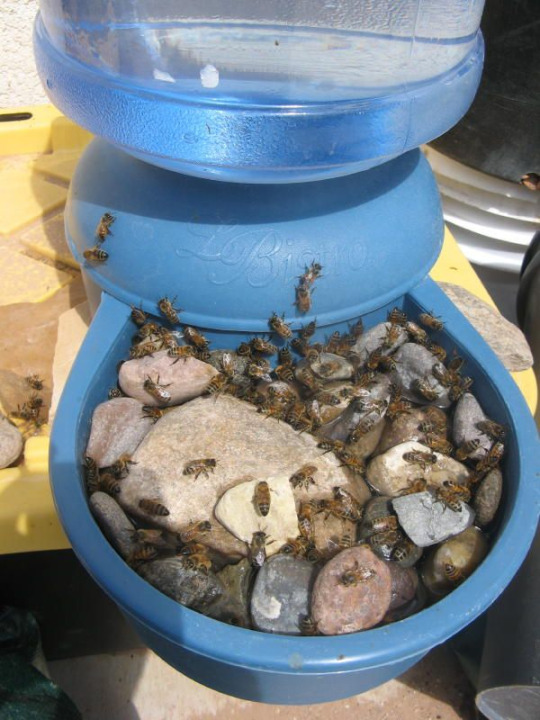
Oftentimes when I see ‘add a water source’ in informational articles about improving your backyard for wildlife, it’s almost always followed by an image of a gorgeous backyard pond with a waterfall and rock lining that looks expensive to set up, difficult to maintain, and overall just… not feasible for me. Arguably, not feasible for a lot of people. And that’s okay! There’s still ways to add water in your garden for all kinds of creatures to enjoy!
There’s tons of ways to create watering stations for insects like bees and butterflies. A self refilling dog bowl can work wonders! Add some stones into the receiving tray for insects to land on or use to climb out, and you’ve got a wonderful drinking spot for all kinds of insects! You can also fill a saucer or other dish with small stones and fill it, though it’ll likely need refilling daily or even several times a day during hot times.
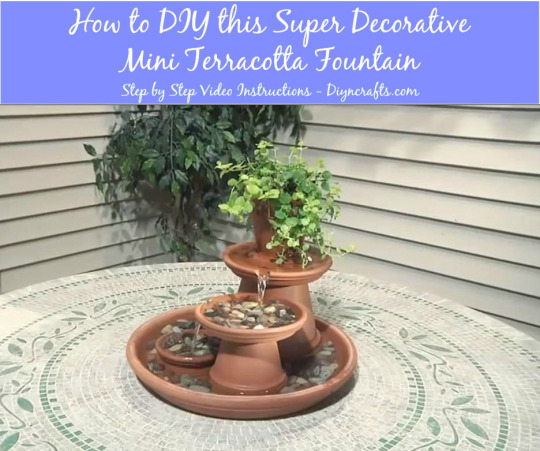
I've seen people online use all kinds of things to make water features. Some go with terra-cotta pots, pebbles, and a cheap pump to get a small and simple fountain. Others use old tires, clay, and a hole in the ground to create an in-ground mini pond system. If all else fails, even a bucket or watertight box with a few plants in it can do the trick--though do be wary of mosquitoes if the water isn’t moving. In situations like these, a solar-powered fountain pump or bubbler are great for keeping the water moving while still making it a drinking option for wildlife (it not even more appealing for some)--and these items can be obtained fairly cheap online!
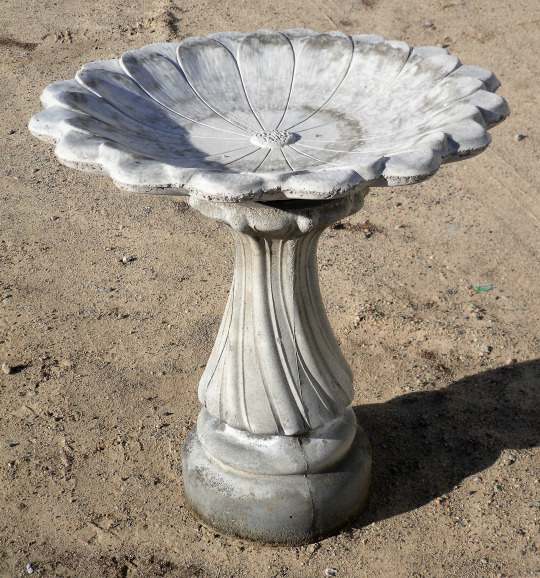
Bird baths are an option as well--a classic way to provide for birds in your area, they can be easy to find online or in a gardening store! The only downside is that a good, quality bird bath can be pricey up-front. However, a nice stone bird bath should last a long time, be easy to clean and refill, and be enjoyed by many birds! I’ve also seen tutorials on how to make your own with quickcrete! Bird baths will be a welcome sight to birds, as they provide a space for them to drink and bathe to regulate the oils in their feathers for flight and insulation. Putting a stone in the middle will also help insects to escape if they fall in, and provide a place to perch so they can get their own drink. You’ll want to change the water and clean the baths regularly--as often as once a week, if you can manage it.
If possible, it’s highly encouraged to fill and refill water features with rainwater instead of tap water. Tap water is often treated, so instead of using hoses or indoor kitchen water, collecting some rainwater is a great alternative. Collecting rainwater can be as simple as leaving cups, bins, or pots outside for awhile.
Butterflies and other creatures will also drink from mud puddles. If you can maintain an area of damp soil mixed with a small amount of salt or wood ash, this can be fantastic for them! Some plants also excel at storing water within their leaves and flowers (bromeliads come to mind), making them an excellent habitat for amphibians as well as a drinking spot for insects and birds.
Bird Feeders and Bird Houses

Some of the fancy, decorated bird feeders are expensive, but others can be pretty low-cost--I got my bird feeder from Lowe’s for around 10 dollars, and a big bag of birdseed was around another 10 dollars and has lasted several refills! If you don’t mind occasionally buying more birdseed, a single birdfeeder can do a lot to attract and support local birds! If you’re handy, have some spare wood, and have or can borrow some tools, you may even be able to find instructions online to make your own feeder. You may not even need wood to do so! Even hummingbird feeders, I’ve found, are quick to attract them, as long as you keep them stocked up on fresh sugar water in the spring and summer!
An important note with bird feeders is that you have to make sure you can clean them regularly. Otherwise, they may become a vector for disease, and we want to avoid causing harm whenever possible. Also keep an ear out and track if there’s known outbreaks of bird diseases in your area. If local birding societies and scientists are advising you take your birdfeeders down for awhile, by all means, do it!

Bird houses are naturally paired with bird feeders as biodiversity promoters for backyard spaces, and it makes sense. Having bird houses suited to birds in your area promotes them to breed, raise their young, disperse seeds, and generally engage in your surrounding environment. Setting them up takes careful selection or construction, preparation, and some patience, but sooner or later you might get some little homemakers! Keep in mind, you will need to clean your birdhouses at least once a year (if not once per brood) to make sure they’re ready and safe for birds year after year--you wouldn’t want to promote disease and parasites, after all. But they could be a valuable option for your landscape, whether you purchase one or construct your own!
Again, do make sure you're putting up the right kind of boxes for the right kinds of birds. Bluebird boxes are some I see sold most commonly, but in my area I believe they're not even all that common--a nesting box for cardinals or chickadees would be far more likely to see success here! And some birds don't even nest in boxes--robins and some other birds are more likely to use a nesting shelf, instead! Research what birds live in your area, take note of any you see around already, and pick a few target species to make homes for!
Solitary Bee Houses

A bee house or bee hotel is a fantastic way to support the solitary bees in your area! For a few dollars and some annual cleaning, you can buy a solitary bee house from most big box nurseries. Alternatively, you can make one at home, with an array of materials you may already have lying around! You can even make them so that they’ll benefit all kinds of insects, and not necessarily just bees.
Though you don’t even necessarily have to break out the hammer and nails, buy a ton of bricks, or borrow a staple gun. Making homes for tunneling bees can be as simple as drilling holes in a log and erecting it, or drilling holes in stumps and dead trees on your property. You might even attract some woodpeckers by doing this!
Providing Nesting Area
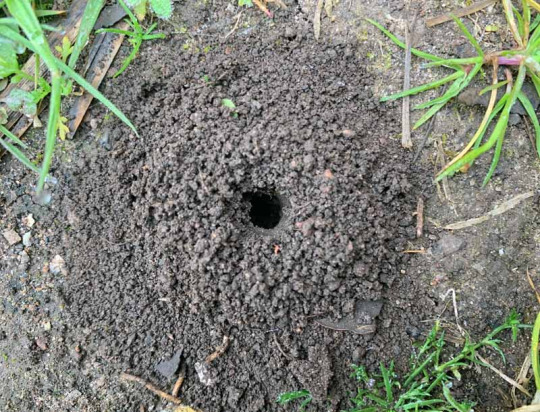
There are tons of different kinds of bees, and they all make different kinds of homes for themselves. Not all of them make big cavity hives like honey bees, or will utilize a solitary bee house. Bumblebees live in social hives underground, particularly in abandoned holes made by rodents--some others nest in abandoned bird nests, or cavities like hollow logs, spaces between rocks, compost piles, or unoccupied birdhouses. Borer, Ground, and Miner bees dig into bare, dry soil to create their nests. Sparsely-vegetated patches of soil in well-drained areas are great places to find them making their nests, so providing a similar habitat somewhere in the garden can encourage them to come! I do talk later in this document about mulching bare soil in a garden--however, leaving soil in sunny areas and south-facing slopes bare provides optimal ground nesting habitat. Some species prefer to nest at the base of plants, or loose sandy soil, or smooth-packed and flat bare ground. They’ve also been known to take advantage of soil piles, knocked over tree roots, wheel ruts in farm roads, baseball diamonds and golf course sand traps. You can create nesting ground by digging ditches or creating nesting mounds in well-drained, open, sunny areas with sandy or silty soil. However, artificially constructed ground nests may only have limited success.
Providing Alternative Pollinator Foods
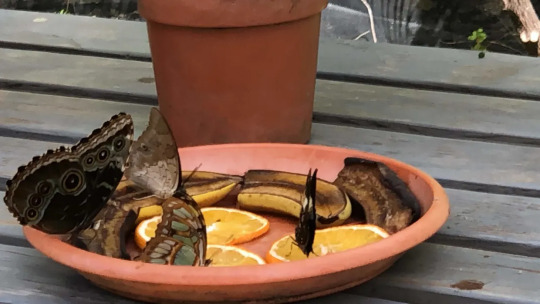
Nectar and pollen aren’t the only foods sought out by some pollinators! Some species of butterflies are known to flock to overripe fruit or honey water, so setting these out can be an excellent way to provide food to wildlife. You may want to be cautious about how you set these out, otherwise it can help other wildlife, like ants or raccoons. Butterflies may also drop by to visit a sponge in a dish of lightly salted water.
Bat Houses and Boxes
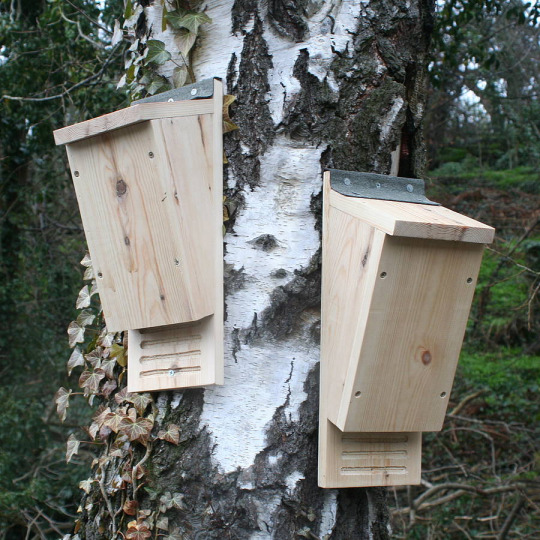
Big or small, whether they support five bats or five hundred, making bat boxes and supporting local bats is a great way to boost biodiversity! Not only will they eat mosquitoes and other pest species, but you may also be able to use the guano (bat droppings) as fertilizer! Do be careful if you choose to do that though--I’ve never had the opportunity to, so do some research into how strong it is and use it accordingly.
Provide Passageway Points
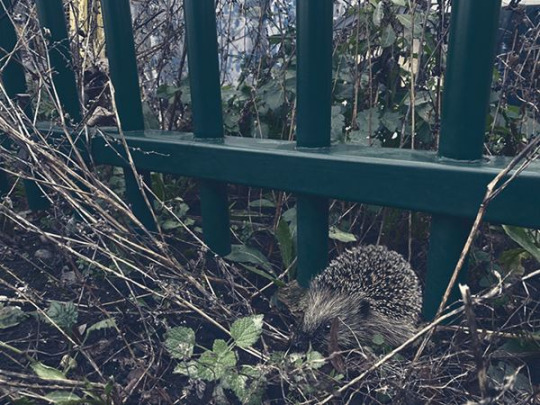
If you want your area to be more accessible for creatures that can’t fly or climb fences, allowing or creating access points can be an excellent way to give them a way in and out. Holes in the bottom of walls or fences can be sheltered with plants to allow animals through.
In a somewhat similar manner, if you’re adding a water fixture, it’s important to provide animals a way to get into and out of the pond--no way in, and they can’t use the water. No way out, and they may drown. Creating a naturalistic ramp out of wood beams or sticks, or stepped platforms out of bricks, stones, or logs can do the trick.
Get or Keep Logs and Brush Piles

I’ve already mentioned logs a good handful of times so far in this post. To be used as access ramps, or as nesting areas for solitary bees. But they have value as much more than that! Logs on the ground provide shelter for all kinds of animals, especially depending on size--anything from mice, reptiles, and amphibians to things like turkey vultures and bears will use fallen logs as shelter. Inside of a decaying log, there’s a lot of humidity, so amphibians are big fans of them--meanwhile, the upper sides of them can be used as sunning platforms by things like lizards. Other animals can also use the insides of logs as nest sites and hiding places from predators too big to fit inside. Fungi, spiders, beetles, termites, ants, grubs, worms, snails, slugs, and likely much more can be found inside rotting logs, using the rotting wood as food sources or nesting places. They can then provide food for mammals, amphibians, reptiles, and birds. They can also be regarded as a landmark or territory marker as wildlife get more familiar with your space.
So how do you get logs for cheap? Try Chip Drop! I talk about them more in a future post, but you can mark saying that you’d like logs in your drop, so they’ll give you any they have! In fact, you may even get a drop faster if you're willing to accept some logs. You may also be able to approach arborists you see working in your area and ask for logs. There may also be local online listings for people selling logs for cheap, or just trying to get rid of them. If there’s land development going on near you, you may be able to snag logs from trees they cut down to make space. Do keep in mind, you don’t need to have huge gigantic logs laying around your property to make an impact--even small logs can help a lot.

If possible, creating and leaving brush piles on the edge of your property can be a great boost to biodiversity--even if you may not see the wildlife using it. They’ll provide shelter from weather and predators, and lower portions are cool and shady for creatures to avoid the hot sun. The upper layers can be used as perch sites and nest sites for song birds, while lower layers are resting sites for amphibians and reptiles, and escape sites for many mammals. As the material decays, they also attract insects, and as such they’ll attract insect-eating animals too. As more small animals find refuse in your brush pile, their predators will be attracted to them as well. Owls, hawks, foxes, and coyotes are known to visit brush piles to hunt. Making a brush pile can be as simple as piling branches and leaves into a mound, as big or as small as you want. You can even use tree stumps or old fence posts near the base, and keep stacking on plant trimmings and fallen branches. Do note that you don’t want to do this near anything like a fire pit.
Don't forget, with all of these, your mileage may vary for any variation of reasons, so don't worry if you can't take all of even any of these actions! Even just talking about them with other people may inspire someone else to put out a bat box, or leave a few logs out for wildlife!
That's the end of this post! My next post is gonna be about ways to get seeds and plants as cheaply as possible. For now, I hope this advice helps! Feel free to reply with any questions, success stories, or anything you think I may have forgotten to add in!
#biodiversity#solarpunk#environmental stewardship#gardening#outdoor gardening#(i know this is literally the Dont Gotta Garden post but these could also be excellent additions to a preexisting garden so)#ani rambles#out of queue#the biodiversity saga#here in the tags to once again emphasize your mileage may vary with all of these#my mom is scared of bats theres no way in hell shes gonna let me put up a bat box#but I have been able to put out a shallow bird bath and a little solarpowered hummingbird bath fountain#do what you can! every bit counts! You may be able to do something that I or your neighbors can't!#for example my nextdoor neighbors have literally no trees in their backyard where the hell would they put a bat box#meanwhile i have trees in my backyard but still can't put up a bat box. maybe the neighbors next to me could!#similarly brush piles are a no go for my family but someone somewhere else could set one up!#i am rambling in the tags now uh long story short do what you can don't stress about what you can't
4K notes
·
View notes
Text

I need a front yard garden ASAP. They’re so fucking pretty. Let me be cute and feed my neighbors.
708 notes
·
View notes